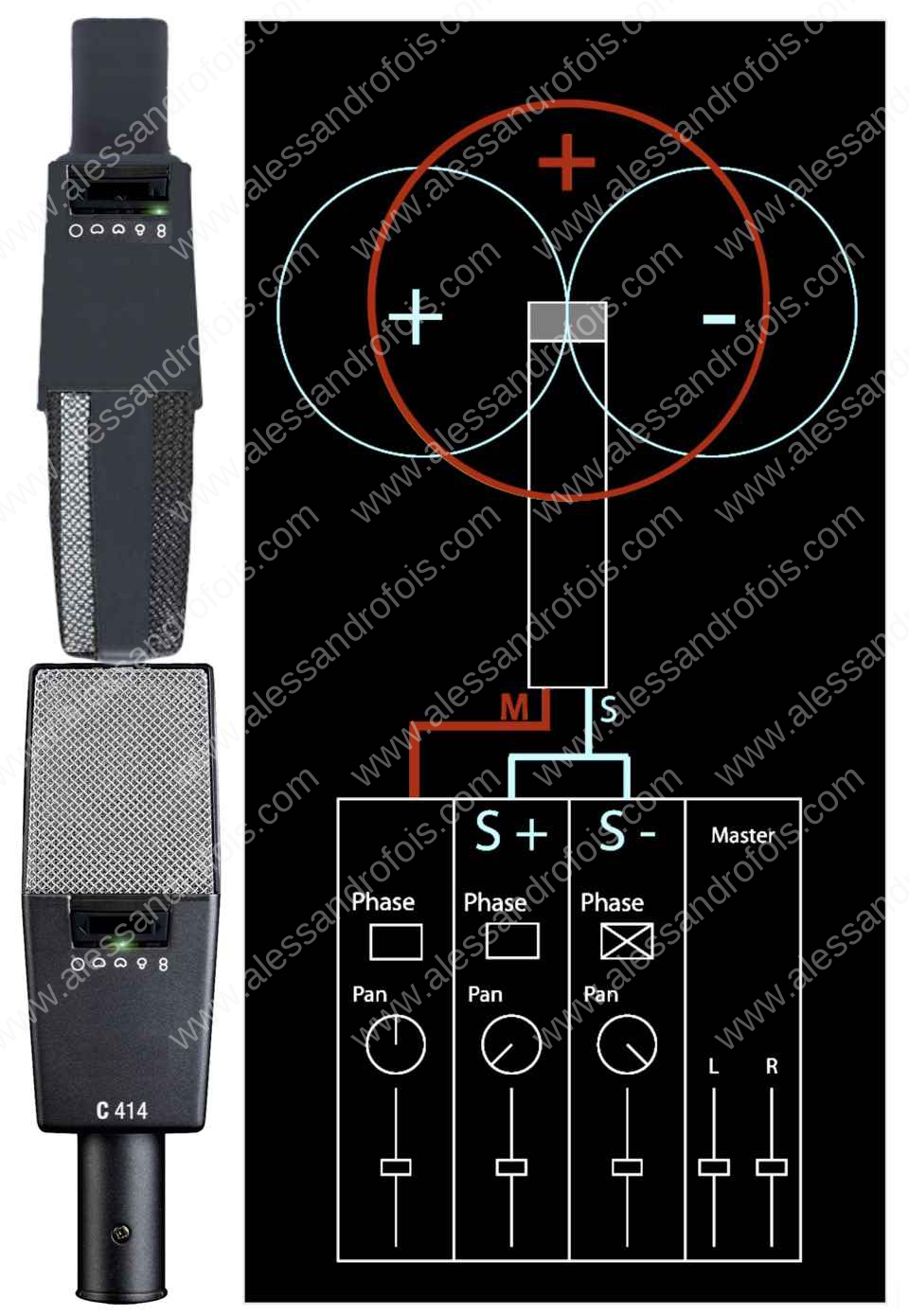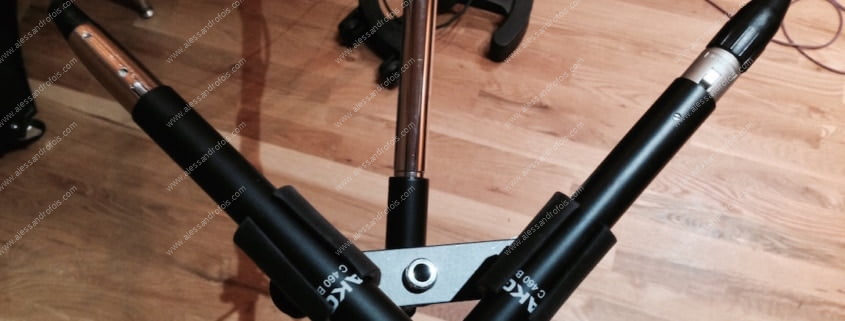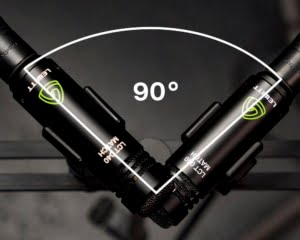The stereo recording of the voice
- Author Profile
- Recent posts
Pianist, Composer, Arranger, Sound Engineer, Writer, Blogger
Alessandro Fois is a musician, composer, pianist, arranger and sound engineer. Since 2018, he has also been a writer, blogger and webmaster. He currently resides in Ivrea (Turin) where, in addition to the above activities, he manages Lycnos, studio for audio, video and web services, and the recording studio Glamour Recording Studio.
The stereo recording of the voice
Rarely will one feel the need to record a solo voice in stereo.
Often, in fact, when necessary, a 'stereophonisation' of the monophonic vocal source is generated by means of processors such as delays, modulators, the harmoniser, or even by recording the vocal performance on three parallel tracks positioned left, centre (the main one) and right.
However, in recordings of very rarefied arrangements we may feel the need to make an ambient recording, which may not be advisable in very small recording rooms and/or with imperfect acoustic treatment due to the increased incidence of poor quality ambient sound that would penetrate the audio programme of the recording.
For stereo recording of the voice, we can distinguish between:
1 - Stereo recording of voice with L/R technique
This involves filming the voice by placing two microphones in stereo, choosing from the following techniques:
Variable XY technique
This involves placing two identical microphones one on top of the other in front of the singer's mouth, so that the capsules coincide perfectly, and they must touch each other (without touching) on the source axis coming from the singer's mouth.
The microphones must be oriented, one to the right and the other to the left, so as to form an identical but opposite angle with the aforementioned axis, having a standard measurement of approximately 45° for each microphone (which means that the angle between them will be 90°); alternatively, this angle may be reduced from 90° to a minimum of 60° or enlarged to a maximum of 120°.
Narrowing the angle will result in a narrowing of the stereo field and a decrease in the incidence of room reflections, while widening will result in exactly the opposite; room incidence will be lower in acoustically large rooms and well-treated - the coherence of the stereo phase is almost absolute.
ORTF technology
 This is achieved with two identical microphones with the capsules approximately 17 cm apart and oriented to form a 110° angle.
This is achieved with two identical microphones with the capsules approximately 17 cm apart and oriented to form a 110° angle.
The axis between the two capsules must, of course, be perfectly aligned with the axis coming out of the singer's mouth.
This shot will produce a very natural but very ambient sound, so use is generally limited to sufficiently large shooting rooms with properly treated acoustics; stereo phase coherence is good.
Spaced technique
This is achieved with two identical microphones positioned one to the right and the other to the left of the singer, so that, at a 45° angle, they direct the capsules towards the singer's mouth, at a distance of approximately 20 cm from it.
This imaging technique produces a wider stereo dimension while maintaining acceptable stereo phase coherence and a more moderate ambience in comparison with the ORTF technique.
It is also possible to interpose a sound-absorbing screen between the capsules of two microphones, perpendicular to the axis of voice emission.
The advantage of these various techniques is that they produce a very natural and pleasant sound, which can be appreciated in acoustically well-set rooms.
The disadvantage is that it is not possible to obtain a sound with them that is decidedly dry, which is often a requirement for many applications, especially in pop music.
Mono source recording + stereo ambient field
This mode, which uses three recording channels instead of two as in the previous examples, is more widely used as it is considered more useful and versatile in most applications.
It is a matter of recording the voice in mono as usual, and at the same time making a recording stereo of the ambient field, which can then be dosed as desired during the mix.
The positioning of the 2 microphones to be used for the ambient field can be left to the creativity of the sound engineer, resulting in customised effects of ambient voice field.
However, there are two main suggestions, which can be used alternately as desired:
- position two identical studio microphones in the Blumlein position, both with a figure of 8 polar pattern, overlapping them on the vertical axis as in the XY technique mentioned above (see figure to the side); the angle between the two microphones on the horizontal axis must be exactly 90°; position these microphones behind the singer at the back of the hall, approximately one third of the depth of the hall;
- place two identical studio microphones in cardioid position, behind the singer at the back of the room, about 1/3 of the room depth, so that they are 1/3 and 2/3 of the width of the room and point them towards the ceiling.
At mix time, this stereo pair of microphones could be useful to add a natural touch to the vocals in the mix, a very interesting solution especially for small acoustic ensembles, provided that the recording room 'sounds good'.
2 - Stereo recording of voice with M/S technique
 Two microphones, not necessarily identical, are required for this mode:
Two microphones, not necessarily identical, are required for this mode:
- n.1 cardioid positioned frontally towards the voice, which will be dedicated to pick-up main (as if it were a standard monaural shot)
- No.1 with a figure-of-eight polar pattern, oriented perpendicular to the first microphone (at a 90° angle), so as to pick up the left and right sides of the room (see figure)
Microphone No. 2 will not pick up the direct voice but only the reflected voice due to the double shot in counterphase that (virtually) cancels the sound coming from a 90° angle from both sides
Such a microphone, on the other hand, will perfectly pick up the reflections induced by the voice on the environment.
At the end of the registration we will then have:
- an M (middle) channel with the direct sound of the source, in mono, picked up by microphone 1
- an S (side) channel with the reflected sound of the source, in mono, picked up by microphone no. 2
At this point we should duplicate the S track and invert it in phase (only the duplicated one), allocating the original entirely to the Left channel by means of the panpot, and the duplicated one entirely to the Right channel. The M track, on the other hand, should remain in the centre.
At this point we will have constructed a kind of stereophony which will also allow us to independently adjust the direct sound and the reflected sound converted to stereo.
Phase coherence is total since, when listening in mono, the L and R channels, being identical but inverted in phase, would cancel out, leaving the M track containing the direct sound alone.
Creative variation of the MS technique
Instead of the single microphone No. 2 with figure-of-eight figure, two identical microphones with cardioid polar pattern should be used, with the capsules overlapping almost to the point of touching, directed in opposite directions, perpendicular to microphone No. 1 (always 90°).
A sound-absorbing acoustic screen of good effectiveness must be placed between the singer and these microphones to prevent direct sound from being picked up by the two side microphones
Above the screen, the central microphone capsule No. 1 should pop out, pointing towards the singer's mouth.
At this point, the No. 3 tracks should be 'panpotted' as before:
- the central microphone (M) in the centre
- the other 2 microphones, one completely to the right and the other completely to the left
You now have something similar to before, i.e. a direct centre channel and two side channels containing basically reflected sound, which can be mixed independently.
However, there are some differences that correspond to some advantages and just as many disadvantages:
- the side channels will also contain the direct sound to a small extent, in addition to the reflected sound, with the risk of displacing some of the direct sound if the S channel is kept at a very high volume
- the stereo feeling offered by the S channel is more natural than in the pure M/S system
- you can decide to use the S-microphones by leaving them in phase or reversing the polarity of one of them: you will get slightly different results from which you can choose (generally it will be better to leave them in phase)
- the phase correlation will be decreased but the centre channel will not suffer substantially, which will still allow some ambient reflected sound to be perceived even when listening in mono







Leave a Reply
Want to join the discussion?Feel free to contribute!